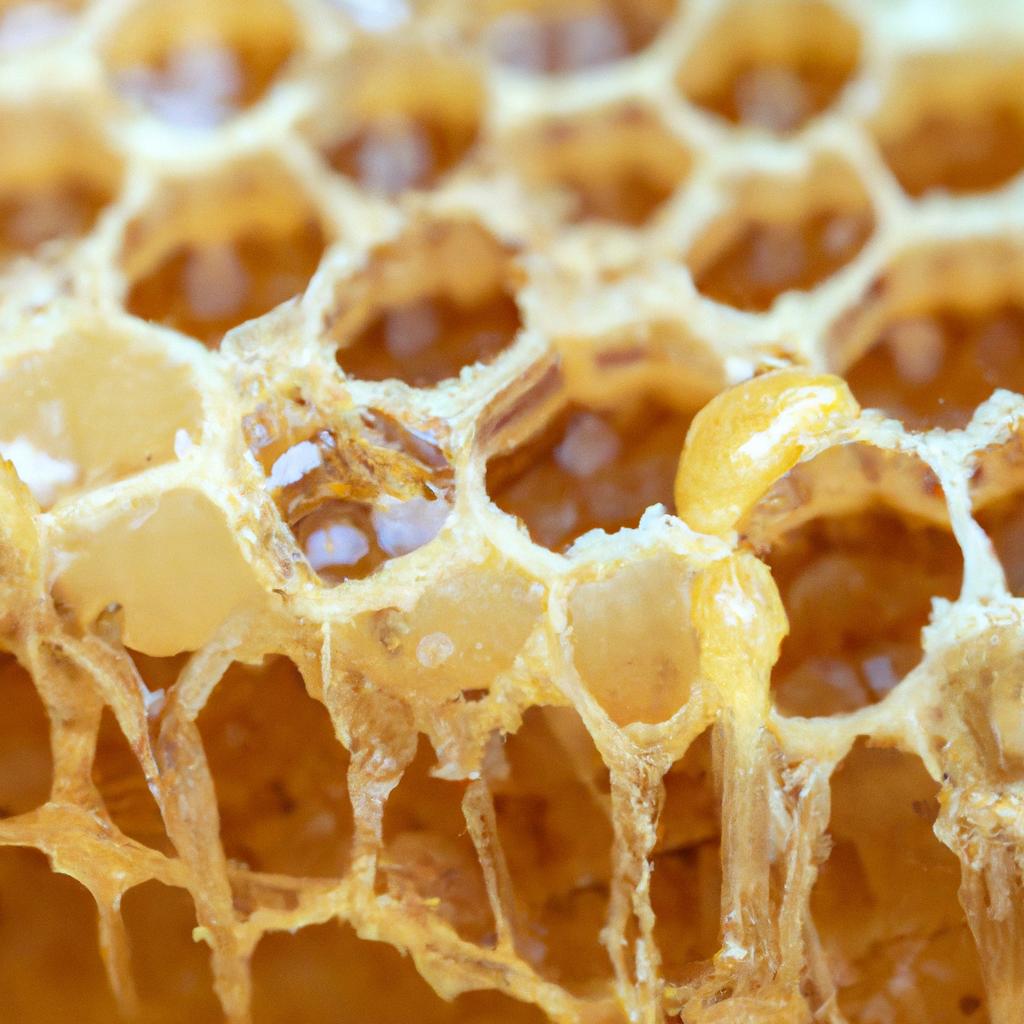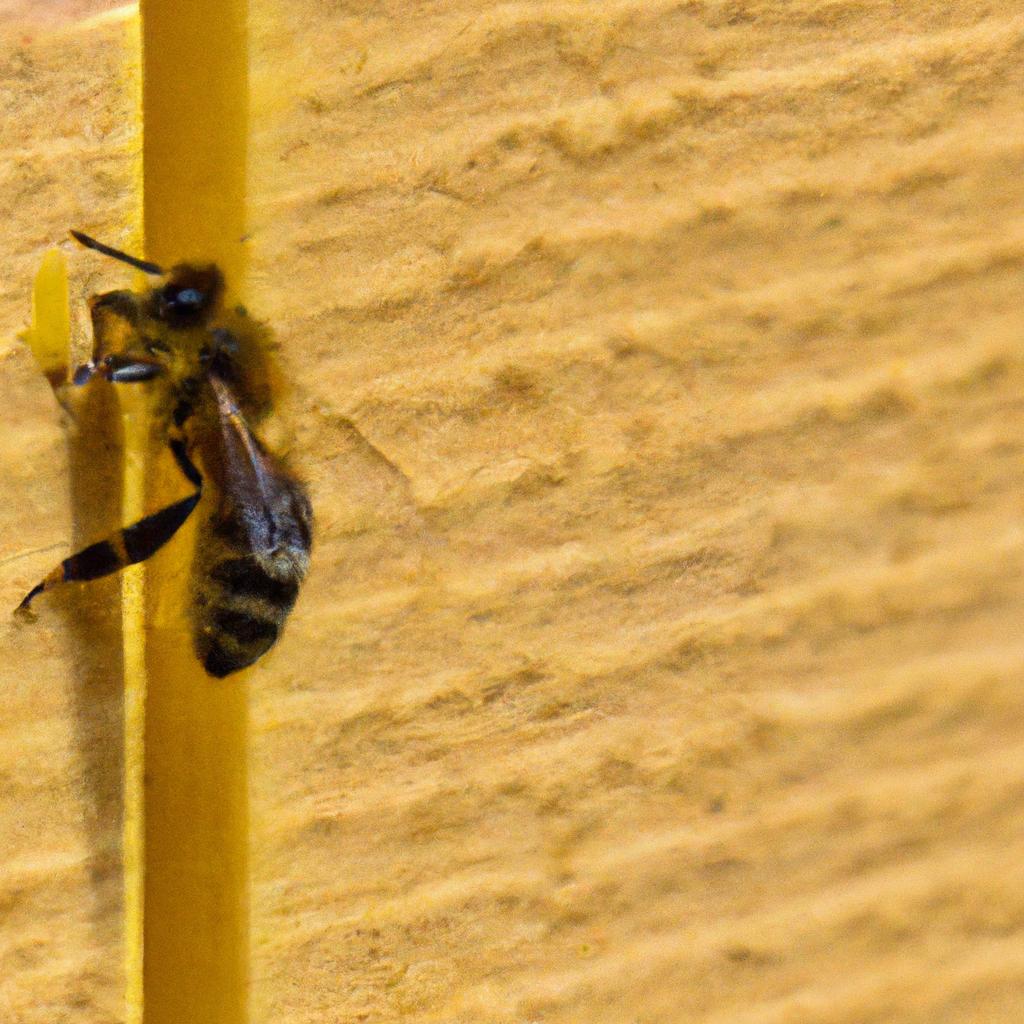Honeybees are an essential part of our ecosystem, responsible for pollinating many of the fruits and vegetables we eat. They are also responsible for producing one of the most beloved natural sweeteners, honey. But how much honey does one bee make in its lifetime?
Introduction

Before we dive into the amount of honey a single bee can produce, let’s first define what honeybees are and their importance in our ecosystem. Honeybees are social insects that live in hives and work together to collect nectar and pollen from flowers to produce honey. They are critical pollinators, responsible for pollinating more than 90 crops worldwide, including almonds, apples, and blueberries.
Honeybees are also incredibly important to the honey industry. Honey is a natural sweetener that has been used for thousands of years and is known for its health benefits, including its antibacterial and anti-inflammatory properties. In this article, we will explore the honey production process, the life of a honeybee, and the amount of honey a single bee can produce in its lifetime.
The Life of a Honeybee

Honeybees have a complex life cycle that consists of four stages: the egg, larva, pupa, and adult. The queen bee lays eggs, which hatch into larvae after a few days. The larvae are fed royal jelly for the first few days and then a mixture of pollen and nectar. After a week, the larvae spin cocoons and enter the pupal stage, where they undergo metamorphosis and develop into adult bees.
Once the adult bees emerge from their cocoons, they take on various roles in the hive, depending on their age. The youngest bees work in the hive, cleaning, feeding larvae, and building honeycomb. As they grow older, they become foragers, collecting nectar and pollen from flowers to bring back to the hive. The lifespan of a honeybee varies depending on its role in the hive. Worker bees live for about six weeks during the active season, while queen bees can live for up to five years.
Stay tuned for the next two sections:
- Honey Production in a Hive
- Honey Production by a Single Bee
Honey Production in a Hive
To produce honey, honeybees collect nectar from flowers using their long, tube-like tongues. They store the nectar in their stomachs, where it mixes with enzymes that break down the sugars and turn it into honey. Once the bees return to the hive, they regurgitate the nectar into the mouths of other bees, who continue the process of breaking down the sugars and adding enzymes. The bees then fan their wings to evaporate the excess water, creating a thick, syrupy liquid that we know as honey.
Once the honey is ready, the bees store it in honeycomb cells made of beeswax. They cap the cells with wax to protect the honey from moisture and other contaminants. The stored honey is used by the bees as a source of food during the winter months when there are no flowers to collect nectar from.
Honey Production by a Single Bee
The amount of honey a single bee can produce in its lifetime varies depending on several factors, including its role in the hive, the season, and the availability of nectar. On average, a worker bee can produce around 1/12th of a teaspoon of honey in its lifetime. This may not seem like much, but given that a hive can contain tens of thousands of worker bees, the amount of honey produced collectively is significant.
Queen bees, on the other hand, can produce much more honey than worker bees. They do not forage for nectar and instead focus on laying eggs. However, they can produce up to 2,000 eggs per day during the active season, which means that they require a lot of energy and resources. To sustain their high levels of egg production, queen bees are fed a diet of royal jelly, a nutrient-rich secretion produced by worker bees.
Factors that affect honey production by a bee include the bee’s age, health, and genetics, as well as the availability of nectar and pollen. Worker bees that start foraging at a younger age tend to produce more honey than those that start later in life. Queen bees that are well-fed and healthy can produce more eggs, which means that the hive will have more bees to collect nectar and produce honey.
In conclusion, honeybees play a vital role in our ecosystem, and their honey production is a valuable resource. While a single bee may not produce much honey, the collective effort of thousands of bees can result in the production of hundreds of pounds of honey. Understanding the honey production process and the factors that affect honey production by bees can help beekeepers and enthusiasts appreciate the hard work and dedication that goes into producing this delicious natural sweetener.
This article was written by BeeKeepinglove.com
Importance of Honey Production by Bees
Honeybees play a crucial role in our ecosystem, and their honey production is essential to their survival and ours. Honey is the primary food source for honeybees and is stored in the hive to provide energy during the winter months when food is scarce. Honey also has antibacterial and anti-inflammatory properties, making it a valuable resource for the bees to fight off diseases and infections.
For humans, honey has been used for thousands of years as a natural sweetener and medicine. It is known for its health benefits, including its ability to soothe sore throats, calm coughs, and heal wounds. Honey is also used in many beauty products, such as face masks and hair conditioners, due to its moisturizing and antibacterial properties.
Honey production also benefits the ecosystem by providing food for other animals, such as bears, birds, and insects. Honeybees are also critical pollinators, playing a vital role in the reproduction of many plants and flowers. Without honeybees, many of the foods we eat would not exist, and our ecosystem would be severely impacted.
Conclusion
In conclusion, honeybees are essential to our ecosystem, and their honey production is critical to their survival and ours. The life of a honeybee is complex, with each stage playing a significant role in the production of honey. A single bee can produce up to 1/12th of a teaspoon of honey in its lifetime, and a hive can produce up to 100 pounds of honey in a year.
Honey is not only a natural sweetener but also has many health benefits for humans and bees. It is essential to protect honeybees and their habitats to ensure the continued production of honey and the survival of our ecosystem. So, let us all work together to protect our honeybees and their critical role in our world.
*Note: This article was written for BeeKeepinglove.com, a website dedicated to educating people about beekeeping and the importance of honeybees in our ecosystem.
